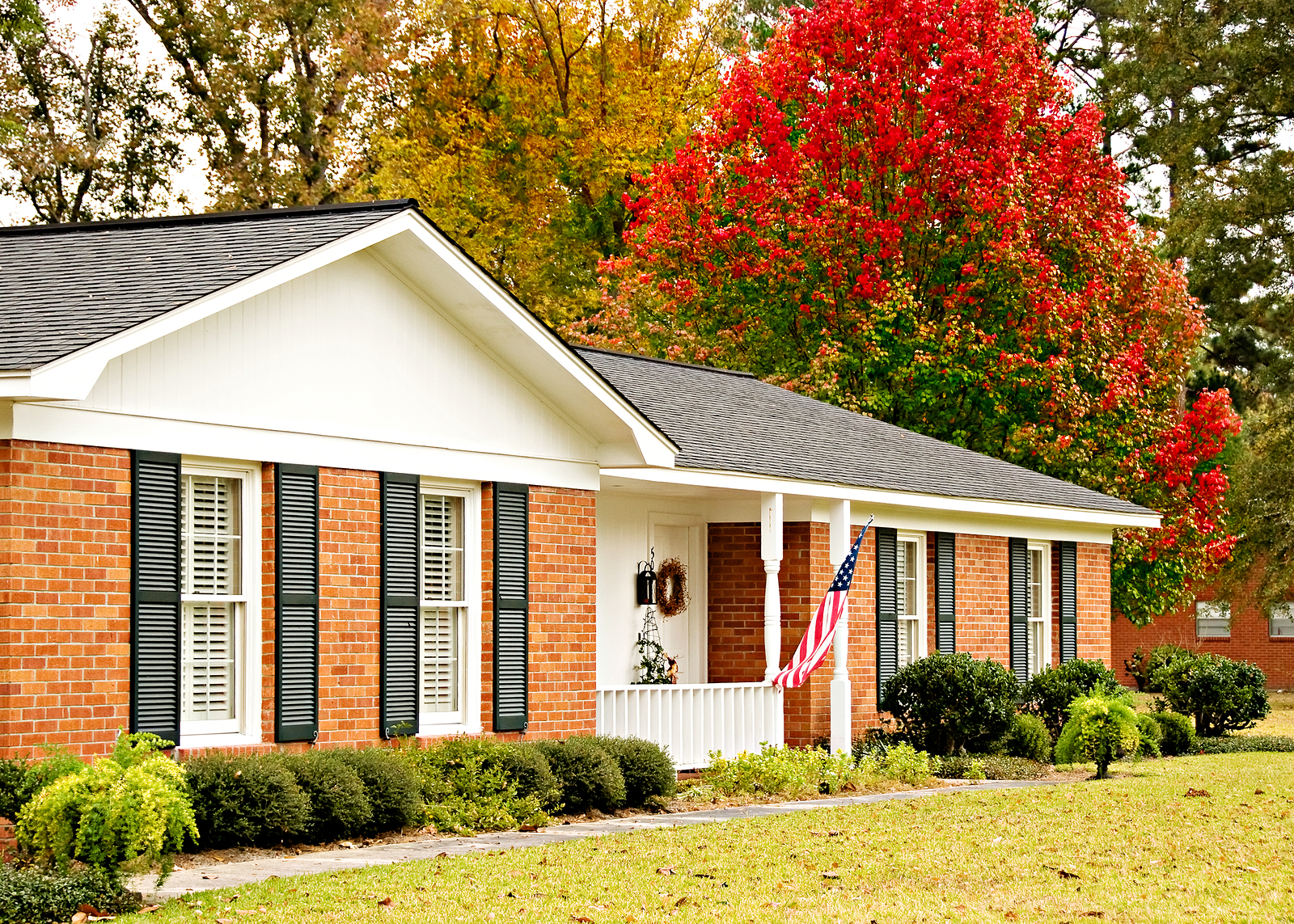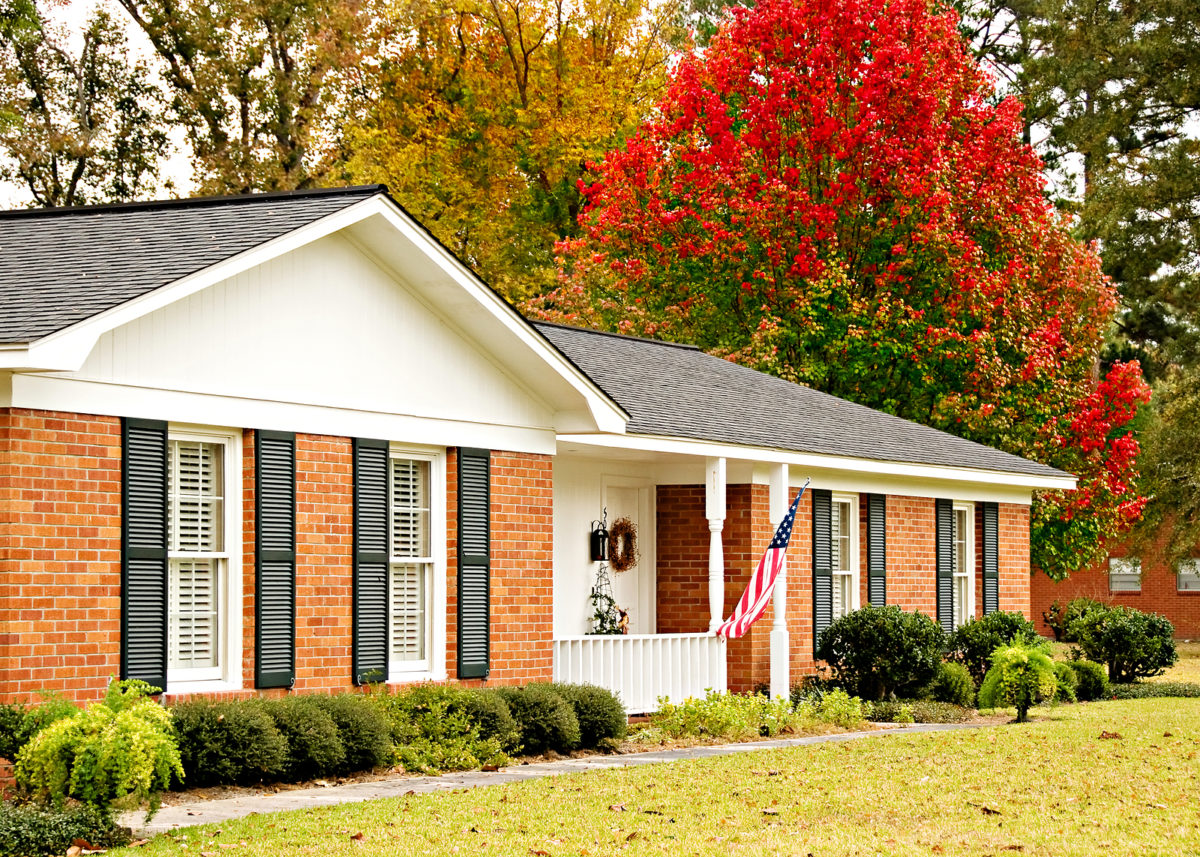
Designed by Cliff May in 1932, the ranch-style house was conceived specifically for California living.
Mr. May combined elements of the Spanish hacienda and Frank Lloyd Wright’s prairie-style design and expanded on them to include large windows to bring the California landscape visually closer to the home’s interior.
Other identifying features of the ranch house include the long, low layout and the gable roof.
Ranch-style home landscaping goals
The main goals when landscaping the ranch house are to visually raise its low profile and soften its sharp, square silhouette.
While other plants, such as trees and grasses, help meet these goals, the right shrubs do double — and sometimes triple — duty.
Low-growing shrubs in the front bed also help preserve one of the ranch home’s key architectural elements: picture windows.
Break up the straight lines with curved planting beds
Widening the front planting bed to at least 4 feet, and curving it, helps break up the straight lines of the front of the ranch house.
As you design the curved bed, place the center curve directly in the center of the front of the house, curving toward the house.
Raising the bed 10 inches with topsoil helps bring the eye up when viewing the home from the street.
Shrubs
We referred earlier to the importance of shrubs when landscaping the yard in front of a ranch house.
Toward the front of the beds, plant shrubs that remain small and have a rounded growing habit, or tolerate heavy pruning to make them round.
Winter Gem or dwarf English boxwoods are ideal and will thrive in the shade cast by the house’s eaves.
Variegated or colored foliage, such as the soft yellow of the gold thread cypress, draws the eye away from the house’s low profile.
Balance is an important landscaping concept, so a tall, conical tree or shrub is something to consider planting.
Shrub Placement
Plant the low-growing shrubs in the front bed, set back from the edge, in the same arc as the bed. Consider the following:
- Box-leaf Euonymus (Euonymus japonicus ‘Microphyllus’) USDA Zones 6 – 9
- Prostrate white Abelia (Abelia x grandiflora ‘Prostrata’) USDA zones 6 – 9
- Cream De Mint™ dwarf mock orange (Pittosporum tobira ‘Shima’) USDA Zones 8 – 11
Enter your ZIP Code here to find your growing zone.
Set larger shrubs, such as azaleas, or the conical tree, at the corners of the house to provide a definite end to the house’s long line. These corner plantings also add a vertical focal point.
Aim for an asymmetrical grouping of plants. Ranch houses are supposed to be informal and were designed for simple, casual living.
